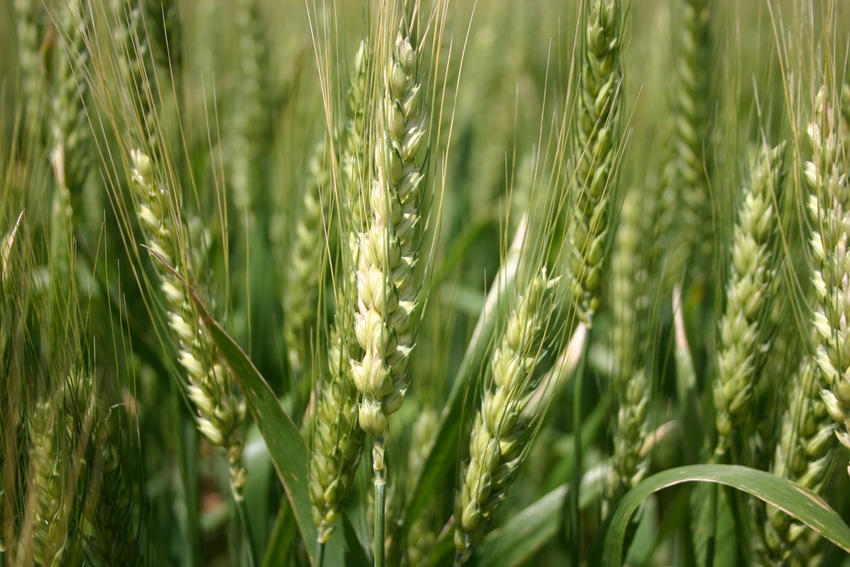March 21, 2014

Since February 3, KC July wheat futures contract price and thus, forward contract for harvest delivery price offers, have increased $1.80. This increase implies that market analysts believe 2014 hard red winter (HRW) wheat production will be below average. HRW wheat producers, especially in Kansas, Oklahoma, and Texas, are expected to have less wheat to sell than was expected two months ago, and this situation is bad news.
The good news, at least for producers who will have wheat to sell, is that 2014 harvested wheat can be contracted for harvest delivery $1.80 higher than on February 3. Potentially, higher prices could partially offset lower wheat production.
For the Texas Panhandle and southwestern Oklahoma wheat producers who expect to harvest little or no wheat, a higher price will not do them any good. Except, if they bought crop insurance and selected the harvest price crop insurance option, they may get a slightly higher insurance payment.
Four words explain $1 wheat price increase
Surface and soil maps show that over much of the HRW wheat production area, moisture is short from the surface to 32 inches deep. Nearly all of Texas’ wheat production area is rated Extreme to Exceptional Drought (worst two drought levels). Oklahoma’s wheat production area is mostly rated Severe to Extreme Drought with extreme southwestern Oklahoma rated Exceptional Drought.
Kansas fares better with only the western 15 percent of the state rated Extreme Drought and the major wheat areas rated from Abnormally Dry (lowest drought level) to Severe Drought (second and third of five drought levels).
For more information on markets and other farm management issues, please check out Southwest Farm Press Daily and receive the latest news right to your inbox.
Wheat is a resilient plant, and experience proves that a wheat plant can produce in the worst conditions. Given present poor to very poor crop conditions, timely rains could produce close to a relatively good HRW wheat crop. The odds are against timely rains, but anything is possible.
Using five-year average production, Kansas is the number one producer of HRW wheat at 38 percent. Oklahoma is second at 12 percent, and Texas is third at 9 percent. Kansas, Oklahoma, and Texas together normally produce 62 percent of U.S. HRW wheat.
Kansas’ wheat planted acres are seven percent less than last year. Oklahoma’s wheat planted acres are five percent lower, and Texas’ wheat planted acres are equal to last year’s plantings.
Planted acres in Colorado are 26 percent higher than last year, and Montana’s planted acreage is up 25 percent from last year. Based on the last five year average HRW production, Montana is the third largest producer of HRW wheat at10 percent, and Colorado is fifth with about 6 percent.
Planting, growing, and moisture conditions are, and have been, relatively good in Colorado and Montana. Colorado and Montana are expected to have above average 2014 HRW wheat production, which will offset a small percentage of expected lower wheat production in Kansas, Oklahoma, and Texas.
Some analysts suggest that the political unrest in Crimea and the Ukraine is partially responsible for higher wheat prices. Reports indicate that the situation has not affected the Ukraine’s wheat exports to date, and that only about 7 percent of Ukrainian wheat is exported via ports in Crimea
Only nine to 10 weeks remain until the HRW wheat harvest starts in Texas and Oklahoma. Timely rains could result in prices being $1 lower than current forward contract prices offer. Continued dry weather could result in prices being higher than current forward contract price offers. We will know yields and prices when the wheat is delivered to the elevator.
The bad news is that if prices are higher, more producers will have little or no wheat to sell. If prices are lower, producers will have more wheat to sell, and that could be good news.
Also of interest:
About the Author(s)
You May Also Like






